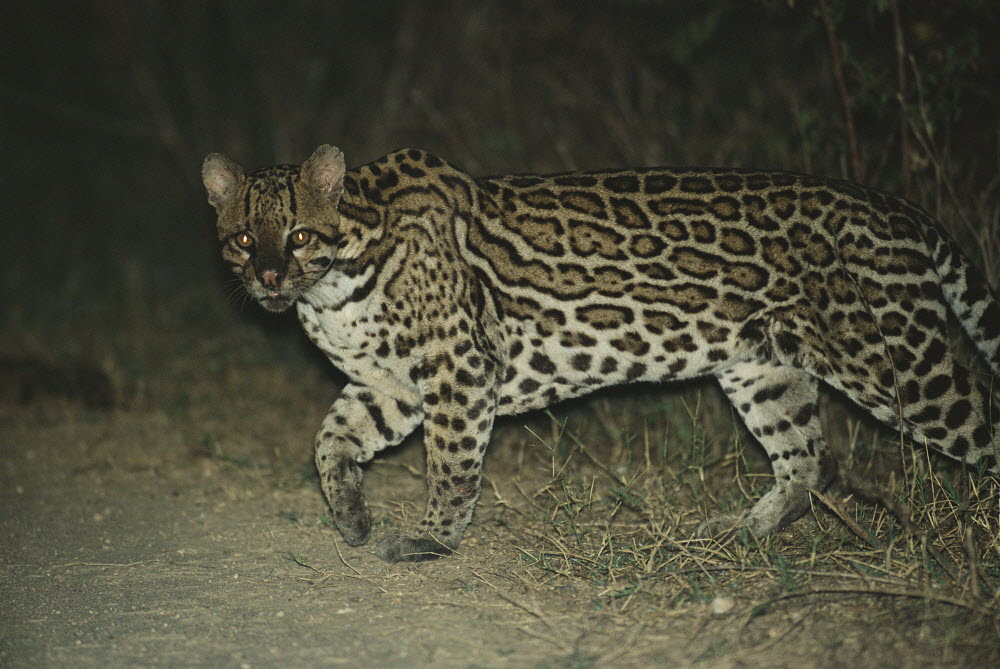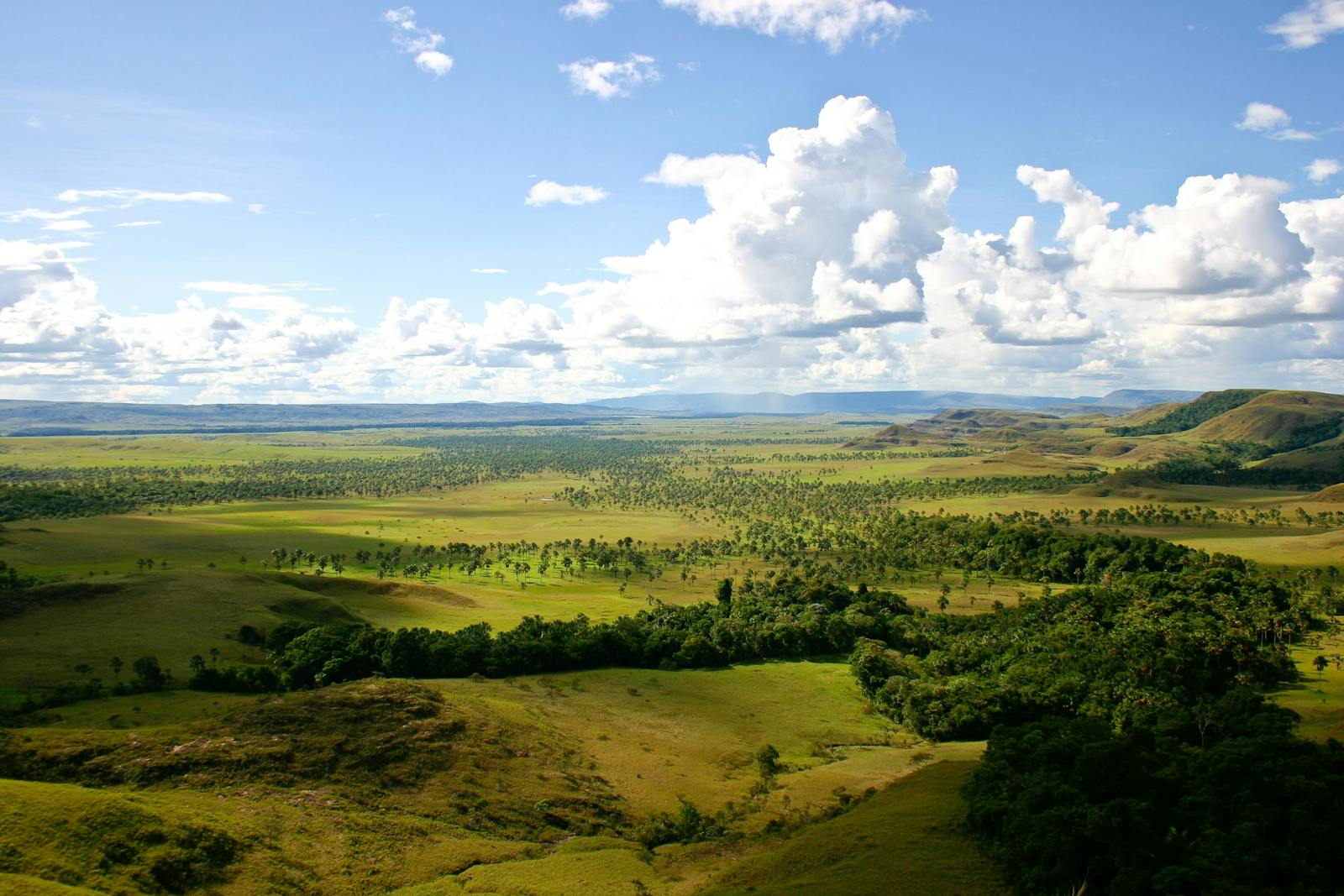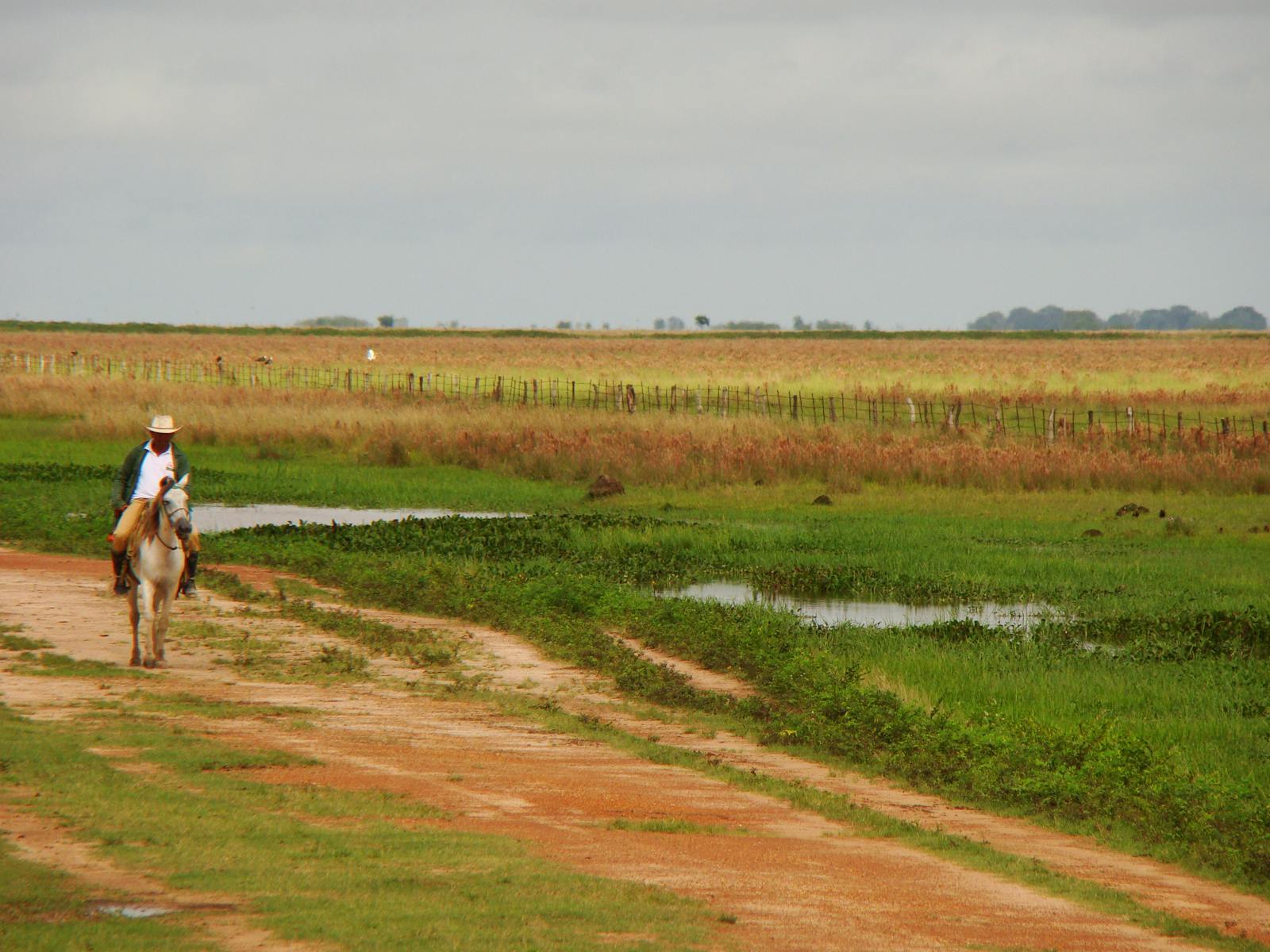Llanos
The ecoregion’s land area is provided in units of 1,000 hectares. The protection goal is the Global Safety Net (GSN1) area for the given ecoregion. The protection level indicates the percentage of the GSN goal that is currently protected on a scale of 0-10.
Bioregion: Llanos & Dry Forests (NT22)
Realm: Southern America
Ecoregion Size (1000 ha):
37,825
Ecoregion ID:
572
Conservation Target:
41%
Protection Level:
4
States: Venezuela, Colombia
Weighing over 50 kg, the Arrau turtle—also known as the giant Amazon River turtle—is the world’s largest side-necked turtles and the largest freshwater turtle in South America. They are common in the Llanos ecoregion where there are abundant waterways which flood seasonally to create networks of massive wetlands and archipelagos of trees on small rises and hilltops. The Arrau turtle can be seen on the sides of the river systems basking on sandy beaches or muddy banks, and even on top of logs and floating vegetation.
.jpg)
The flagship species of the Llanos ecoregion is the Arrau turtle. Image credit: Creative Commons
The Llanos ecoregion is an area of extensive plains, covered mainly by savanna vegetation, and of great economic importance for Venezuela and Colombia. Geologically, the region is relatively young, perhaps less than 10,000 years old located in a great depression, limited by the Andes in the west, the Venezuelan coastal range that isolates it from the Caribbean Sea in the north, and the Guiana Shield in the south.
This ecoregion has a typical savanna climate, with a well-defined wet and dry season and high temperature (27°C) all year round. Based on soil and water characteristics of the ecoregion, the Llanos should be inhabited by deciduous dry forest; instead it is dominated by various types of savanna intermixed with some forest types, the causation of which is still under study.
Non-flooded savannas grow mainly on the "llanos altos" or high plains, over poor soils with very low nutrient content and are characterized by grass species and scattered trees, commonly manteco and chaparro. Seasonally flooded savannas are inundated for several months at a time and have much richer soils and higher production of grasses as a result. Gallery forests follow along the streams and rivers of the ecoregion, not able to spread out into the surrounding savanna landscape.
There is a small number of endemic plant species in the llanos. This includes 7 species in the savannas and 1 in the gallery forests. There are no endemic birds, and the only 2 endemic mammals are the long nosed armadillo and red sided opossum. Around 100 mammal species have been recorded in the ecoregion. In the wet and flooded savannas, capybara occupies the ecological niche as the large herbivore. Mammals commonly found in the open savannas are the savanna rabbit and several species of rodents. In the gallery forest, peccary, tapir, white-tailed and red brocket deer, capuchin and red howler monkey, lowland paca, porcupine, ocelot, puma, and jaguar have been recorded.
Most of the birds of the llanos inhabit and are usually restricted to the gallery forest. Over 100 migrant birds are reported in the area during winter. Wading and aquatic birds are common in the flooded areas and often become a tourist attraction for their brilliant plumages. Around 36 amphibians and 120 reptiles have been recorded in the ecoregion. Of interest include Arrau turtle, the critically endangered Orinoco crocodile, and red-footed tortoise, which is often a food source for rural populations. There are over 300 species of fish.
The Llanos ecoregion has 12,000 km2 protected in Venezuela National parks "Aguaro-Guariquito",” Cinaruco-Caparo”, and "Río Viejo" as well as 4 fauna refuges. Colombia also has 1.2 million hectares protected by its National Parks "Cordillera de Los Picachos", "El Tuparro" and "Tinigua".

Ocelot. Image credit: Creative Commons
Llano’s savannas are being increasingly converted to pastureland for cattle raising. About 13,000 km2 of habitat in Colombia and 40,000 km2 in Venezuela are being used as pastureland. The trend is similar for corn and rice crop fields, replacing much of the natural vegetation and removing habitat available for native fauna. Deforestation fuelled by the timber industry targets the few patches of forested habitat in this largely savanna ecoregion. The profitable oil industry is producing a wide spectrum of disturbances to the area as well.
The priority conservation actions for the next decade will be to: 1) encourage grazing rotation for cattle to reduce environmental impact; 2) encourage sustainable timber harvest; and 3) encourage education and awareness workshops throughout rural areas to promote biodiversity awareness of the area.
Citations
1. E. M. Pérez, L. Bulla. 2019. Northern South America -- in Colombia and Venezuela. https://www.worldwildlife.org/ecoregions/nt0709. Accessed May 13, 2019.
2. Pérez, E. M. and J. Ojasti. 1996. La utilización de la fauna silvestre en la América Tropical y recomendaciones para su manejo sustentable en las sabanas. Ecotropicos 9:71-82.
3. Pardo, O., Rincón A., and H.D.Hess. 1998. Alternativas forrajeras para los Llanos Orientales de Colombia. Boletín Técnico No 18. Corpoica, Colombia.


-2011.jpg?auto=compress%2Cformat&w=1600)


